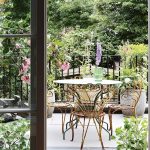Whether it’s a perfectly color-coordinated closet or beautifully arranged baskets and bins with handwritten chalk-marker labels, social media has led many of us to believe that if a space looks aesthetically pleasing, it must be well-organized. But that couldn’t be further from the truth. Many areas of the home may appear tidy, but true organization goes beyond appearances.
Ready to level up your organization skills? Here are five home spaces that experts say most people organize incorrectly.
Closets
Whether it’s a primary bedroom closet, an extra hallway closet, or that guest room closet that doesn’t really get used by guests—so you use it for off-season clothes or formalwear—closets can be tricky to organize.
Professional organizer Shantae Duckworth says one of the biggest mistakes people make is forgetting to measure, which leads to organizing everything incorrectly.
“I always remind people to measure, measure, measure! You have to know what storage items will actually fit in the space,” Duckworth. “I know it can be tempting to buy cute storage solutions, but they have to fit! Otherwise, the space won’t be accessible and will only become more disorganized.”
Pantries
Whether it’s because you got a little too excited at a warehouse store or scored an irresistible deal on canned chickpeas at the supermarket, pantries can quickly become overcrowded and messy.
“People tend to stack items deep, making it hard to see what they have, which leads to wasted food and unnecessary purchases,” explains Duckworth. “Instead, using clear containers, turntables, and tiered shelving can make everything visible and accessible without overspending.”
Best of all, an organized pantry pays for itself. You’re less likely to let food expire before you can use it.
Home Offices
Home offices can become cluttered fast, often turning into dumping grounds for everything from extra paperwork to last year’s taxes and those random coupons that come in the mail. According to Duckworth, most people don’t organize their paperwork properly.
“Many households have piles of paperwork scattered throughout the home or shoved into drawers, making it impossible to find important documents when needed,” she says.
Her solution? Rather than sorting papers into endless categories or hiding them away in drawers, she suggests creating a three-folder system. “One [folder] for action items—bills, invitations, forms that require a response, one for long-term storage—insurance documents, warranties, medical records, and one for shredding or recycling. Labeling and maintaining a weekly routine to go through papers prevents buildup and keeps essential documents at hand.”
Entryways
Leslie Kilgour, a professional organizer, says entryways can be a major problem area. “Whether it’s creating a drop zone by the door for essentials or setting up a laundry system in the entryway—or lack of one—this first-drop spot when you come home can quickly become a disaster zone with shoes everywhere, keys lost, and bags dumped on the floor,” she says.
The issue is that most people don’t set up a designated space for their daily essentials, so things just end up piled up.
“The fix is simple: Create a small landing zone with a few key pieces—hooks for bags and jackets, a bowl or tray for keys, and a small shoe rack or basket to corral the chaos,” she suggests. “Even if you’re working with a tiny space, a couple of strategic hooks and a well-placed bin can make your life so much easier—and save you from scrambling to find your keys every morning.”
Storage Bins
While not technically an area of the home, storage bins are one of the best ways to organize spaces like garages and the tops of closets. However, according to Duckworth, most people just throw everything into these bins without thinking twice.
“Many people buy storage bins before assessing what they truly need, leading to wasted space and cluttered containers filled with random items,” Duckworth says. “The right way to approach organizing is to start with decluttering—removing anything that no longer serves a purpose—before choosing storage solutions.”
Kilgour agrees, adding, “Simplify first—keep only what you truly need, love, and use—then find a system that makes your daily routines easier.”







